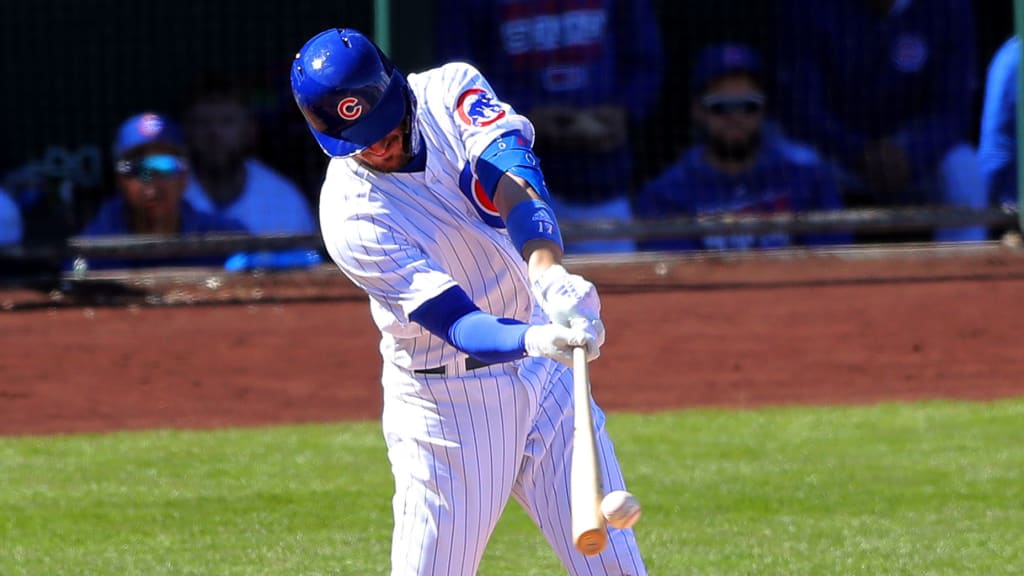
MESA, Ariz. -- Back when Kris Bryant was launching home runs for the University of San Diego, he would occasionally encounter unique strategies from the opposition. In a game against University of California-Irvine, for example, Bryant faced a four-man outfield alignment.
"Never in the Majors," Bryant said on Wednesday morning.
Bryant had never experienced that specific strategy in a big league game, that is, until Tuesday night, when the Reds employed a four-man outfield against the Cubs third baseman. While that kind of alignment can be traced back to the days of Ted Williams as an occasional defensive tactic, the four-man outfield idea has been growing in popularity lately.
Shifting is occupying a lot of the behind-the-scenes conversation about baseball's evolution in this era of analytics, but that typically involves moving infielders to the opposite side of second base. What Bryant encountered in the first inning against the Reds was the left and right fielders shading closer to the lines, while the center fielder and second baseman attempted to take away the gaps.
"I was just like, 'Well, that's weird,'" Bryant said. "I mean, it's smart. You can kind of look at spray charts and stuff. I think we did it to [someone] last year. I don't know. It's kind of a compliment. I take it as a compliment, because it's like, 'This guy hits a lot of balls in the gaps and in the air.' That's kind of how I look at it."
The Cubs actually did it in six counts against St. Louis' Matt Carpenter on July 22. Bryant, as it happened, was the fielder tasked with moving to the outfield (left-center). Carpenter bunted for a hit to shortstop Addison Russell and also grounded out to the pull side while Chicago put that defense in play.
Just because Bryant has been a part of the other side of things does not mean he likes the strategy, though. In fact, the Cubs star belongs to the camp that feels Major League Baseball should have more regulation regarding extreme shifts. This year, MLB will experiment with a rule requiring two infielders to stay on each side of second base in the independent Atlantic League.
Bryant also likes the idea of making infielders stay on the infield dirt.
"I'm a third baseman going all the way out to like short right field," said Bryant, referring to some shifts against lefty batters. "I don't think that should be allowed."
Without those types of rules in effect, Bryant understands why teams are increasingly following the data with on-field strategies like this.
"Of course, because they want to do their job better as an analytics department," he said. "I just don't think that when baseball was created, this was in anybody's mind. So, it's kind of a weird situation that we're in now, because shifts are being deployed so many times during a game and during a season."
Bryant said it is important for a hitter not to alter his approach based on a shift. If anything, the Cubs third baseman said the kind of defensive plan he faced revealed that Cincinnati would try to work him inside consistently. Bryant said that allowed him to focus on a specific part of the strike zone and, as it happened, he singled up the middle in the first inning against the Reds.
"If they were playing a dude right there, they probably would've caught the ball that I hit," Bryant said with a shrug.
After seeing the four-man outfield on Tuesday, Bryant now expects that it will happen during the regular season, too.
"Hopefully we kind of get to a point where the rules are more solidified," Bryant said, "and there aren't any second basemen on the warning track. I don't know if that's the way baseball should be played."
